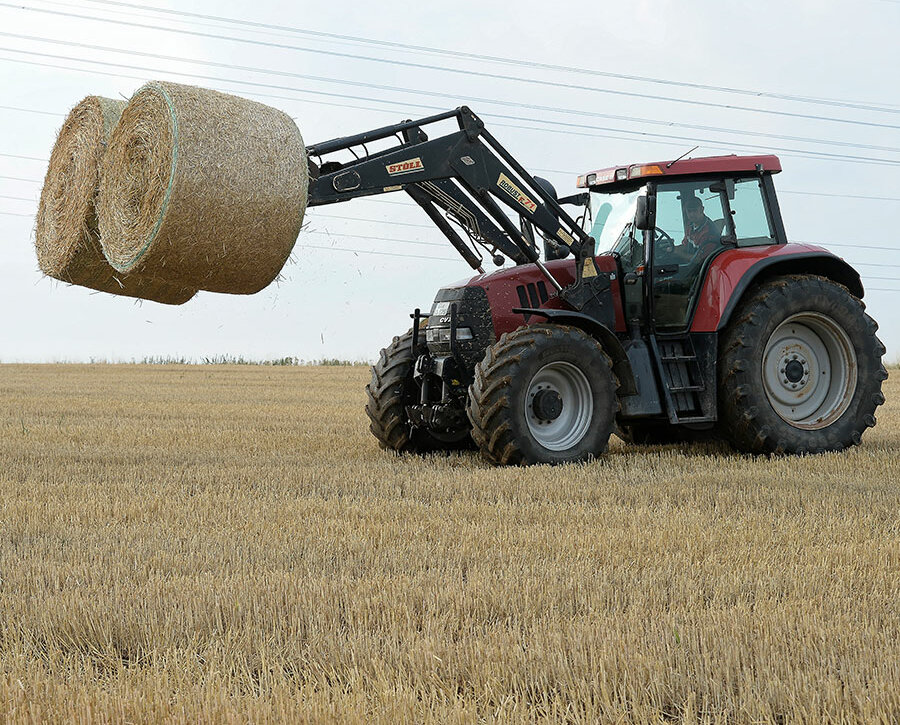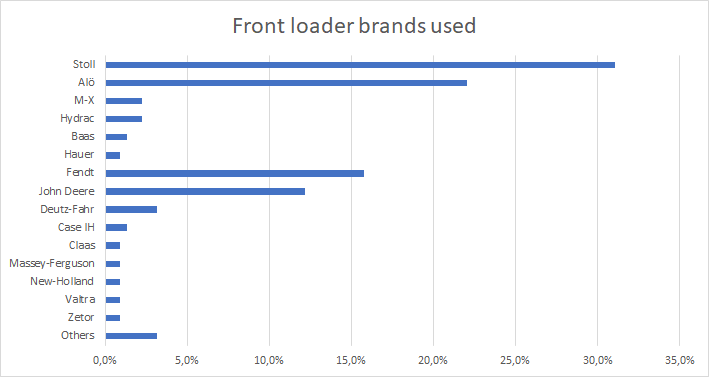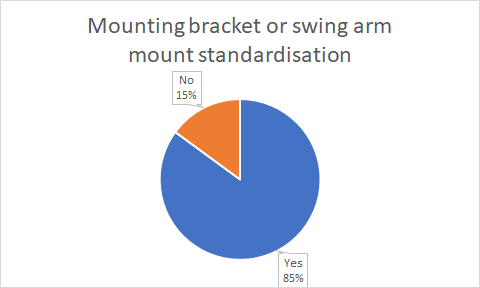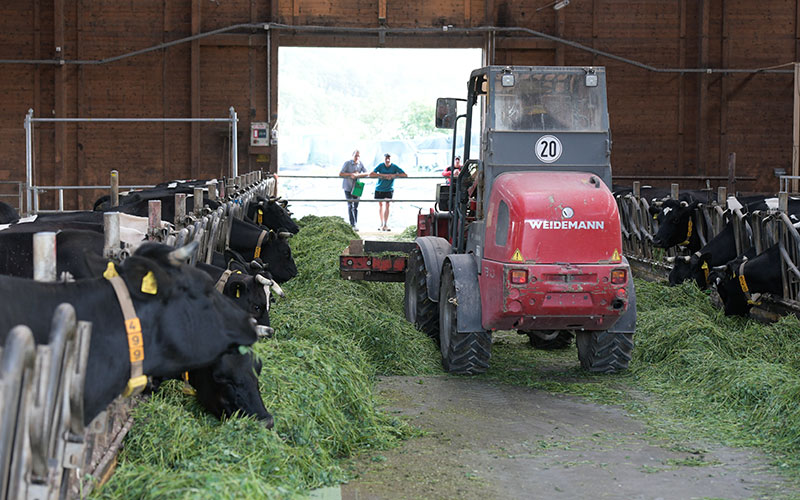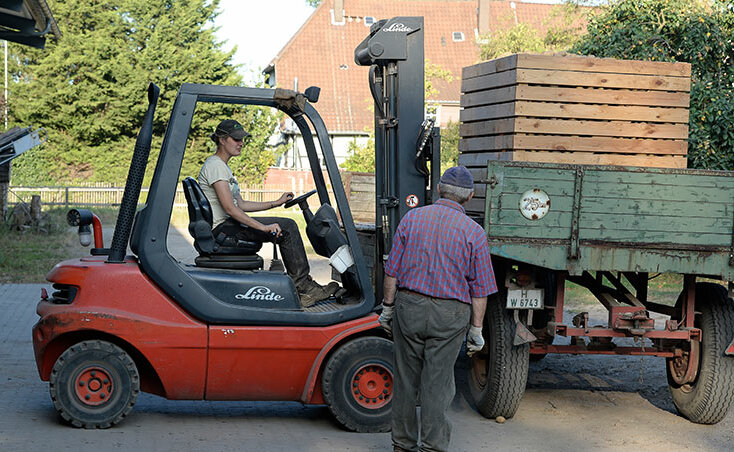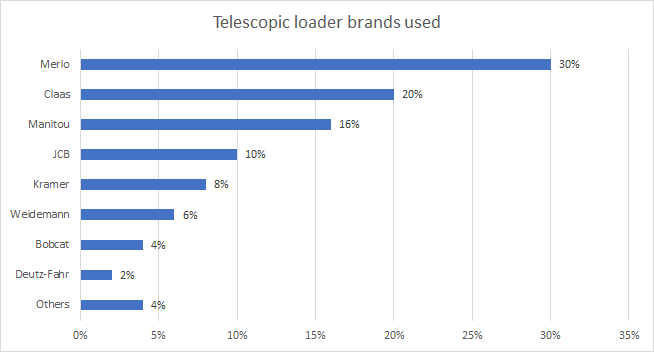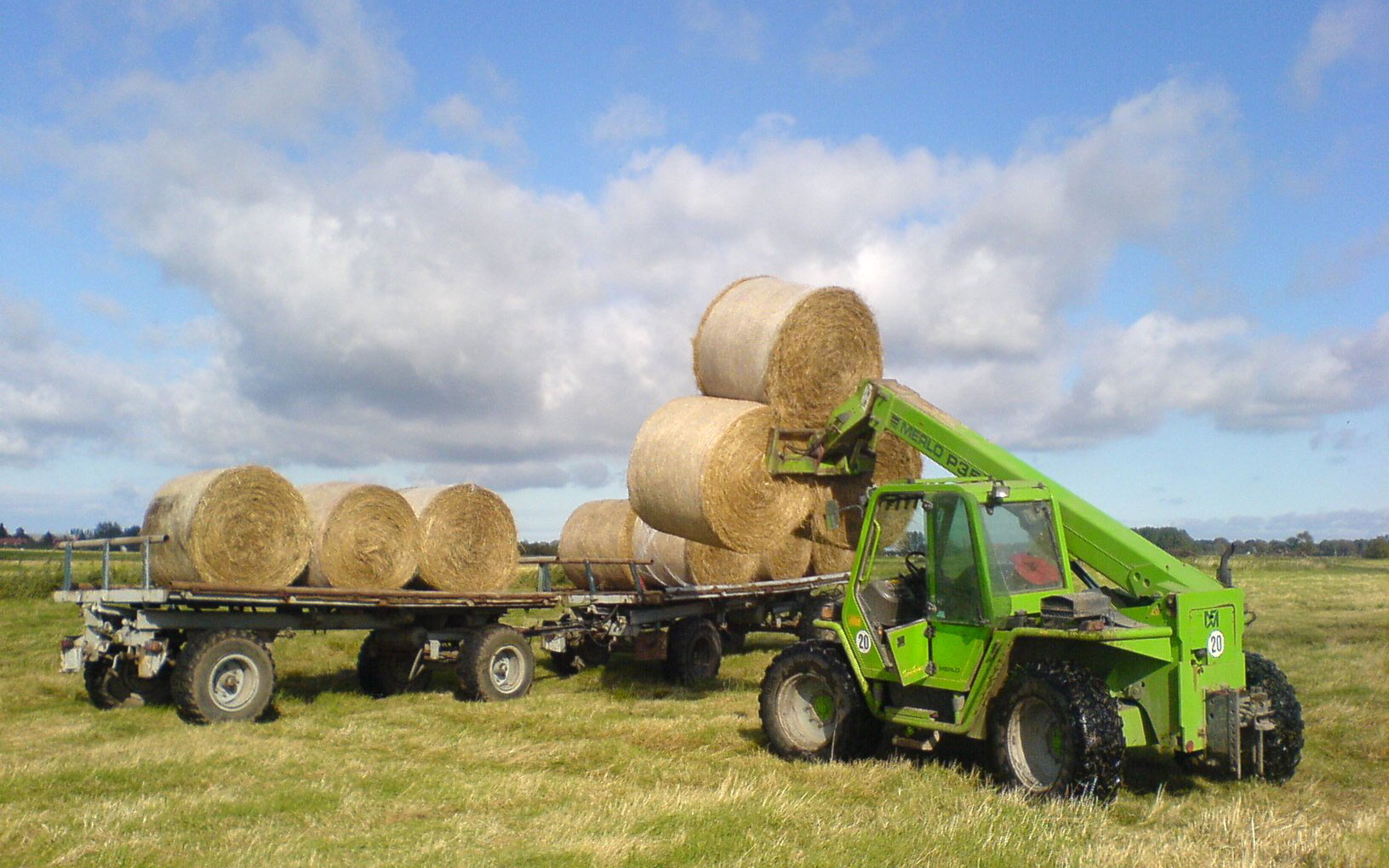DLG-PracticeMonitor 'agricultural machinery'
Front loader remains no. 1
When it comes to loading and unloading, lifting and clearing, there is no getting around the front loader in agriculture, although other loading technology is on the advance. The results of the latest DLG-PracticeMonitor focussing on various aspects of agricultural machinery on farms are presented in the following.
Author: Dr. Frank Volz
DLG Test Center Technology and Farm Inputs
f.volz@DLG.org
Storing, retrieving, stacking, loading, unloading and transporting: although many people equate the term 'agriculture' with animal production and arable farming, the agricultural industry is a prime example of a cargo handling industry in many regards. Each year, millions of cubic metres or tonnes of material are transported and handled. The requirements of the transport technology are extremely broad-based: ranging from bulk goods such as cereals, general cargo on pallets, sacks and crates up to and including tank and silo vehicles for milk or feed pellets, virtually all possibilities are covered.
But what about the actual agricultural machinery? Is the front loader still the omnipresent, universal tool for loading and unloading? Or is it slowly but surely being knocked off the top spot by the increasing number of alternative agricultural machinery products? We got to the bottom of this question in our DLG-PracticeMonitor, an online survey of top farmers.
High response
Over 400 farmers took part in our survey; 216 completed the survey in full. With an average of 3.5 full-time employees, the farms manage 200 ha UAA, of which 161 ha are arable land and 44 ha grassland. Without too much consideration, it can be stated that the front loader is and remains one of the standard tools on farms: around 83% of survey participants stated that they own a front loader (Fig. 1). However, things become interesting when the other loading vehicles and fork-lift trucks come into play: around 22% of farmers own a yard, barn or compact wheel loader. At 22.5% and 20.8%, the share of telescopic loaders and fork-lift trucks is similar, followed by around 15% wheel loaders on the farms. Only the telescopic wheel loaders, a relatively new, hybrid design that is half wheel loader and half telescopic loader, are relatively scarce at just 6.5%. We will deal with the most important vehicles in greater detail in the following.
Front loaders
However, a look at the actual use of the loading technology already shows that farmers have indeed developed a taste for special technology in the meanwhile. When asked to state their most frequently used loading technology without the option of multiple selections, the front loader's share drops down to just about 50% (Fig. 2). Telescopic loaders are particularly catching up here, with a significantly higher percentage than yard loaders and fork-lift trucks. A look at the front loaders' operating times (Fig. 3) gives a relatively clear indication of why that is the case here as well: the top three includes two activities, bale handling and feed preparation, that also number amongst the typical operating areas of telescopic loaders.
One of the participants also made this clear by what he wrote in the 'Further comments' section: "The front loader is now only used as a back-up loader if the telescopic loader breaks down or for long distances on the farm."
Stoll and Alö (with the Quicke and Trima brands) are the two manufacturers most frequently selected amongst the brands that are used. In total, around 2/3 of farmers prefer front loaders from independent brands, whereas 1/3 use loaders from tractor manufacturers.
As was to be expected, old loaders with a latch mechanism are still found on the market, with a total of 15%, but are obsolescent models. In terms of the attachment standard for implements, it therefore comes as little surprise that there are hardly any other percentages worth mentioning apart from Euronorm and Euro/type 3 combination quick-change frames, with a combined share of over 85%. 'Visibility' is the most important issue when using front loaders. While the farmers are satisfied or very satisfied with a number of technical details, with the exception of lubricating point accessibility, their evaluations of the visibility of the implement, both when hitching and unhitching and while working, and also of the overall visibility when the front loader is mounted, are considerably poorer. This also matches the crucial purchasing criteria: overall visibility is in second place here, directly after the stability of the loader, followed by attaching and detaching comfort and far ahead of all other criteria. Incidentally, farmers also transfer their positive experiences with standardised implement mounting brackets to the loader as a whole: over 85% of farmers would like to see the mounting bracket or swing arm mount standardised so that any swing arm could be used on any tractor.
Yard and stable loaders
There is an even clearer brand preference as regards yard and stable loaders. With a market share of almost 55%, Weidemann is the clear leader here, followed by Schäffer (17.4%). Naturally, these vehicles are used above all in and around stables. With over 200 hours per year for manure removal and feed distribution and around 100 hours for silage removal, these two activities together cover more time than all other activities combined. If at all, the only other activities worth mentioning here are bale handling and manure loading, each with approximately 40 hours per year. The issue of 'visibility' is obviously solved far better here. While stability and overall visibility are the crucial purchasing criteria, as in the case of front loaders, over 90% of respondents evaluated overall visibility as 'good' or 'very good'. However, vibration damping on the small loaders is a topic with which some of the farmers are dissatisfied.
Fork-lift trucks
For anyone who wants to move pallets and/or crates – and the application profile is clear here – the loading technology of the fork-lift truck, which was developed specifically for this purpose, is pretty much unbeaten. By comparison, these vehicles are hardly used for any other activities. The uniformity with which virtually all of these vehicles' characteristics and equipment features are evaluated is striking, with good to very good ratings across the board. As expected, the fork-lift trucks only reveal deficits in one discipline, i.e. their off-road capability. Otherwise, they would almost certainly be in use elsewhere as well.
Telescopic loaders
A look at the operating times of telescopic loaders shows that they are used in a similarly universal way, like the front loaders on tractors. Silage removal and feed mixer wagon filling are far in the lead, followed by bale handling. If loading bulk goods such as cereals for transport purposes or also when filling seed drills, fertiliser spreaders, etc. is taken as one activity, it actually outstrips bale handling. Depending on the farm's main activity, however, high numbers of hours per year were also mentioned for emptying potato crates or handling wood chips in individual cases. Merlo is the predominant telescopic loader brand, followed by Claas and Manitou (Fig. 6).
The farmers are overwhelmingly satisfied with their loaders; only the working speed and accuracy when lifting and lowering the arm reveal clear potential for improvement. In terms of crucial purchasing criteria, proximity to the dealer and service partner is important in the case of self-propelled loaders in addition to stability and overall visibility. Naturally, these machines' technical data are impressive: a maximum lifting height of over 21 m with a lifting capacity of 2.5 tonnes at the implement pivot point at ground level is a multiple of what a front loader is capable of achieving.
Summary
The agricultural industry is not only a reluctant transport industry; goods handling is also becoming increasingly important on farms. In view of this and the high weights that have to be moved, it comes as little surprise that loading technology is highly important. While front loaders remain ahead of the pack, it can clearly be seen that other machines are gaining ground. In many cases, telescopic loaders are used as a substitutes for front loaders, while other machines are used more for special applications on farms. An overwhelming majority of farmers expressed a desire for uniform, standardised mounting brackets or swing arm mounts for front loaders.

